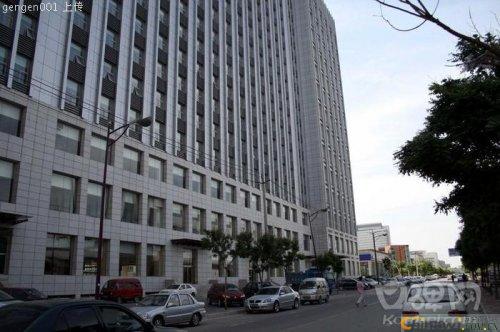Linear bearings are linear motion systems that are produced at low cost and are used with infinite strokes in conjunction with cylindrical shafts. Since the carrier ball is in point contact with the shaft, the load used is small. The steel ball rotates with a very small frictional resistance, so that smooth motion with high precision can be obtained. Linear bearings are widely used in precision equipment such as electronic equipment, tensile testing machines and digital three-dimensional coordinate measuring equipment, as well as sliding of industrial machinery such as multi-axis machine tools, punching machines, tool grinding machines, automatic gas cutting machines, printers, card sorting machines, food packaging machines, etc. component. Lubrication and friction. Grease-lubricated linear bearings are filled with anti-corrosion oil. If lubricating with grease, first remove the anti-corrosion oil with kerosene or organic solvent, and add grease after air drying. It is recommended to use lithium soap grease with viscosity mark N0.2. If oil lubrication is used, it is not necessary to remove the anti-corrosion oil. According to the temperature change, the oil with ISO viscosity grade VG15-100 can be selected. The shaft lubrication can be supplied from the oil. Give the tube, or oil from the oil hole on the outer bearing housing. Since the seal will scrape off the oil, oil lubrication is not suitable for non-porous bearings with seals. The friction coefficient is shown in Fig. 5, and the motion friction coefficient ranges from 0.001 to 0.004. The energy loss due to friction is small. When the moving speed is less than 60m/min, the temperature effect is negligible. The friction force can be obtained by the following equation: F = ц.? P + fsF: friction force (N) *: sealing resistance (2 ~ 5N) P: external load (N) ц: friction coefficient. installation. Fit tolerances for bore and bore diameters. Normally, bearings cannot be preloaded, but high precision, light preloads can be added to the bearings. However, negative diameter tolerances should not exceed the data in the table. Bearing housing and shaft and bearing fit clearance. Mounting of the bearing housing. Standard type of method for mounting the bearing housing with the snap ring and the fixing plate. Mounting the bearing with the set screw will cause the bearing casing to deform and should be avoided as much as possible. When the flange type is installed with a flange type linear bearing, the precision of the surface of the bearing housing with the flange must be accurate. The adjustable (small-open type) bearing is perpendicular to the opening on the bearing housing to obtain a uniform preload in the circumferential direction. Large opening type can also be used if it is used with a suitable bearing housing. Gap adjustment, even light preload. Precautions during installation When installing the linear bearing into the bearing housing, auxiliary work should be used to avoid direct tapping of the end face or sealing ring. The bearing should be evenly introduced, and the optical axis should be worn with a buffer plate and gently tapped. Into a linear bearing, the shaft and the centerline of the bearing must be in line. If the shaft is inserted obliquely, the balls may fall off or cause the cage to be deformed, and damage to the linear bearings. The applied load should be evenly distributed over the entire bearing, especially when subjected to transient loads. Two or more bearings should be used. Linear bearings are not subject to rotating loads, which can cause accidents.

Black coating is a type of Surface Treatment used to provide a durable, aesthetic and protective finish to metal parts. It is applied to a range of substrates, including steel, aluminum, and titanium, through various processes such as painting, chemical baths or physical deposition.
Black coating provides an attractive, matte finish that reduces glare and reflections. It is commonly used in industries such as automotive, aerospace, and firearms, where aesthetics and durability are essential. The black coating can also be used for functional purposes, such as to reduce friction and wear.
One of the most common types of black coating is black oxide. Black oxide is created through a controlled chemical reaction that forms a layer of black iron oxide on the surface of the metal. This process enhances the corrosion resistance of the substrate and provides a uniform and attractive black finish. Black oxide is also used to provide a matte black finish to gun parts, as well as to increase the conductivity of electrical components.
Another type of black coating is powder coating, which involves applying a dry powder to the surface of the substrate and baking it in an oven. This process creates a durable, weather-resistant finish that is resistant to damage from UV rays and other environmental factors. Powder coating is widely used in the automotive and manufacturing industries, where it provides a long-lasting, high-gloss black finish.
Finally, black coating can also be achieved through physical vapor deposition (PVD). This involves depositing a thin layer of black material onto the substrate through a vacuum chamber. PVD black coatings are very durable, and are often used in high-precision applications such as medical instruments and aerospace components.
In conclusion, black coating is a versatile and effective way to provide a durable, aesthetic, and protective finish to metal parts. Its visual appeal, corrosion resistance, and wear resistance make it a popular choice in a variety of industries and applications. Whether applied through chemical baths or physical vapor deposition, black coating plays an important role in enhancing the performance and longevity of metal parts.
Metal Black Coating,Black Powder Coated Metal,Black Zinc Plating,Black Oxide Metal
Lizhi Precision Manufacturing Technology Co.,Ltd , https://www.autoindust.com